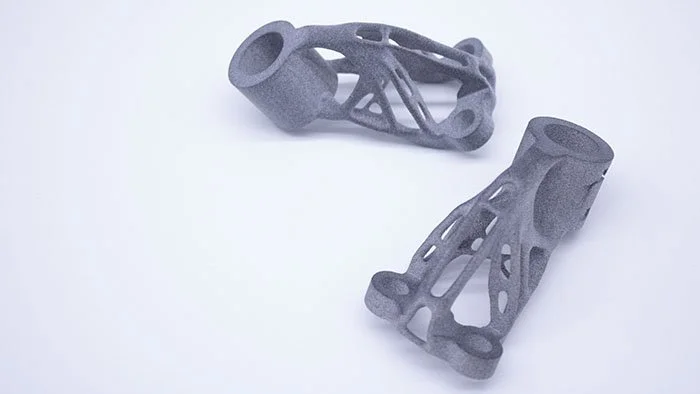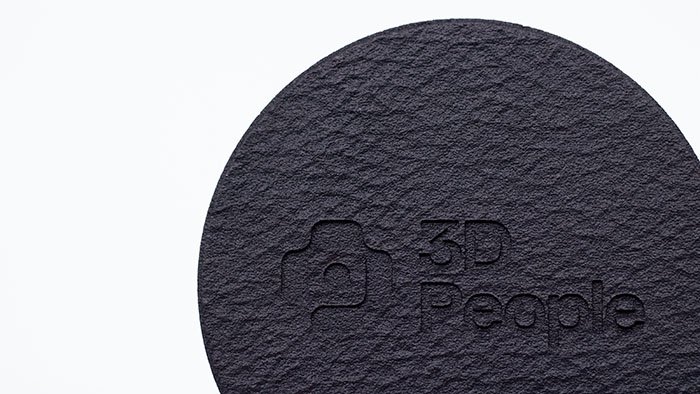3D printing is an incredible technology that gives designers and engineers the ability to rapidly produce parts and products. Despite its widespread use, there are also times when 3D printing is not the best manufacturing option. In this blog post, we'll explore 5 scenarios when you should and shouldn't use 3D printing to manufacture your product.
Here are 5 times when additive manufacturing is suitable for your project
When you need parts quickly / on demand
When the geometry is complex
When production volume is low to medium
When you have design modifications
When lightweighting is important
1. When you need parts quickly or on demand:
Producing parts within a few days means you can rapidly move from the prototyping stage to production. If the volume of parts required is below a few machine loads (which in MJF, can be up to thousands of parts) then your parts could be ready in as little as 48hrs. This can help bridge the gap when a quick manufacturing solution is required. After the prototyping stage, users of 3D printing can build a digital library of their parts to print on demand, reducing the need for warehouse space, as stock levels can be kept very low. Overall this means you can produce locally and with less waste.
2. When the geometry is complex:
Freedom of design has not always been a luxury for designers and engineers, however with additive manufacturing technologies, design complexity has little to do with production viability and part costs. In fact creating a more complex design through reducing material usage can lower the cost of your part. Parts produced in MJF take exactly the same amount of time to manufacture completely independent of their complexity. Injection moulding however is limited by mould design, where the tooling has to be able to release from the part being produced. This means that engineers are restricted by draft angles, undercuts and even wall thicknesses.
3. When the volume is low to medium:
Unless your design can only be manufactured with 3D printing, there is always a production quantity where it is more cost efficient to use another manufacturing method. This number varies from part to part and depends on size and complexity. When using a technology like injection moulding, the cost is broken down into the tooling cost (the cost to manufacture a metal mould) and the unit cost (the cost to produce each unit in plastic). With tooling costs ranging from £2,000 - £100,000+, this can have a great impact on your per unit costs, if only producing a few items. For instance, for 1,000 units, the part pictured here costs £2.35 per unit to print in SLS. If we were to produce 1000 units in injection moulding, the cost would be £6.34 per unit (tooling: £5,429, per unit: £0.92, per unit total: 1000 units + tooling / 1000). See our pricing here
| Process | Tooling Cost | Quantity | Unit Cost | Total* |
|---|---|---|---|---|
| Injection Moulding | £5,429.27 | 1 500 5000 |
N/A £0.92 £0.38 |
N/A £5,889 £7,329 |
| SLS 3D Printing | N/A | 1 500 5000 |
£15.59 £2.64 £2.35 |
£15.59 £1,320 £11,750 |
4. When the design changes:
With traditional manufacturing methods, it can be difficult and expensive to produce custom parts or products in small quantities. 3D printing changes that by allowing manufacturers to produce customised parts on-demand, without the need for expensive tooling or moulds. This makes it possible to produce custom products in small batches, which can be ideal for niche markets or products that are personalised. For example high performance sports goods such as bike helmets have to fit perfectly to the body in order to perform to their specification. Now with additive manufacturing, you can use measurement data to manufacture a helmet that perfectly fits a single user and no one else, thus increasing the performance of the product and reducing the amount of composite materials in the product (foam for comfort).
5. When lightweighting is important:
Keeping part weight down while keeping strength up can be a difficult challenge for engineers, especially when working in the automotive or robotics industry where a parts weight can have great effects on efficiency. With additive manufacturing, lightweighting is a tool to reduce the part mass whilst increasing strength or part properties. It’s not a unique method to 3D printing, however using 3D printing allows for new lightweighting techniques such as latticing (filling unused space with a wire structure) or generative structures (developing a structure with minimal material by analysing the forces). By utilising a few lightweighting techniques for additive manufacturing, you can reduce the weight of your printed part, leading to reductions in material usage, production times and manufacturing price.
Part made with Fusion 360 Generative Design - Printed in PA12 Nylon MJF
Here are 5 times when other manufacturing methods may be more suitable
When fine tolerances are required (less than 0.1mm)
When you need a large quantity of parts (mass manufacturing)
When mould quality finishes are required
When you need materials that cannot be printed
When the size of your product is too large
1. When fine tolerances are required (less than 0.1mm)
If you need parts that require a high degree of dimensional accuracy, and by high degree I mean finer than ±0.1mm, then 3D printing may not be the best option. While some 3D printers have been engineered for accuracy (like our MJF/SLS machines), they generally aren't as accurate as traditional manufacturing methods like CNC machining or injection moulding. This is because the layer-by-layer nature of 3D printing can cause parts to slightly warp in unexpected ways, especially if they're not designed with this in mind from the start. If very fine tolerances are critical for your application, it's best to stick with tried-and-true manufacturing methods. Though always ask yourself what is the highest tolerance that you can use for your project as going for the finest tolerances will greatly increase the price of your part when maybe ±0.1mm was fine all along.
2. When you need a large quantity of parts:
One of the benefits of 3D printing is that it's capable of producing small batches of parts quickly and cheaply. However, if you need more than a few dozen parts, traditional manufacturing methods will be more efficient (and less expensive). This is because preparing materials for 3D printing adds cost. Industrial machines use a fine plastic powder to print, this process of turning raw plastic pellets into a powder form adds cost to the base material. The complexity of your design is very important here. For small complex items, it can still be quicker and cheaper to produce thousands of parts with industrial 3D printing when you include the tooling costs of injection moulding.
3. When mould quality finishes are required:
If a SPI Grade finish is critical for your application. For example, if cosmetic appearance is important or if your part will be exposed to harsh environments, 3D printing may not be right for you since most additive manufactured parts will have visible layer lines on their surfaces (although this can be minimised with modern design and finishing techniques). Traditional manufacturing processes like CNC machining or injection moulding can produce parts with much smoother surface finishes since they don't rely on layering processes like additive manufacturing does. However this is rapidly changing and new tools and techniques are becoming available to improve the finish of additive parts. For example, designing parts with textures can reduce the layer lines or using polishing and polyshot finishing can create a smoother part with a scratch resistant surface finish.
3D Faux Leather Texture applied to improve the finish of a MJF 3D Printed part
4.When you need materials that cannot be printed:
There are limitations to what materials can be used with current 3D printing technologies. If you need a part or product made from a material that cannot be printed, then you'll need to look into alternative manufacturing methods. For example there are not many elastomers (flexible) materials available for 3D printing, and the ones that do have drawbacks such as lower part performance. Also for products that require multiple plastics within a single part (i.e a toothbrush) it's better to utilise a 2 shot injection mould to bond the elastomer to the rigid plastic body.
5. When the size of your product is too large:
We all have seen that people are printing buildings nowadays using huge concrete 3D printers mounted onto cranes. However, for this article, let's only talk about plastic parts. Large parts take a long time to produce, in fact doubling the size of a part can cause it to take 8x longer to manufacture. (it will also use 8x the amount of material). As 3D printing materials and machines are expensive, the time and material used on larger parts (we're talking bigger than 50 x 50 x 50 cm) causes prices to go up exponentially.
In conclusion, Whether or not 3D printing is right for your application depends on a variety of factors including accuracy requirements, quantity needs, lead time constraints, complexity milestones, and surface finish expectations. Assessing these requirements upfront will save you time and money in the long run by ensuring that you choose the best possible manufacturing method for your needs!




